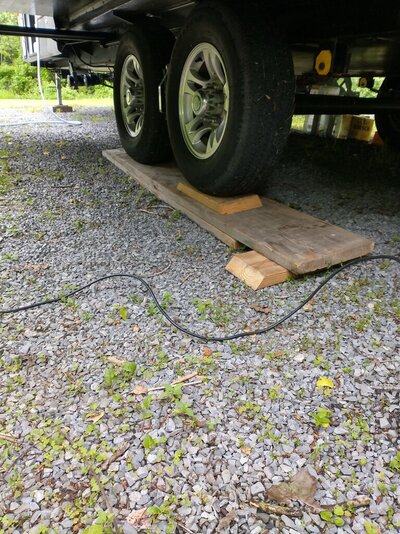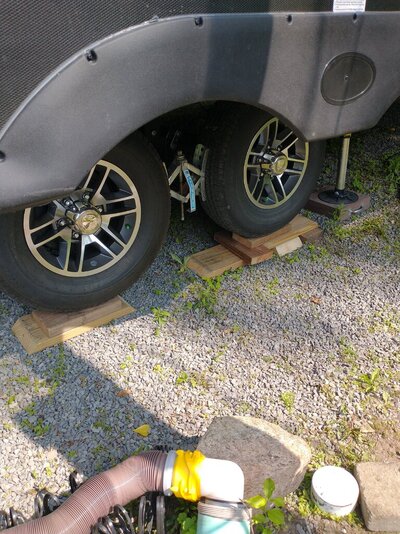I learned the hard way to do an initial level of my fifth wheel exactly the same way as I leveled all my previous travel trailers that had the scissors jacks. That means getting the trailer as level as possible with boards under the tires to get a left-right or side-to-side level first. It will never be exact, but it will be within that 3 percent tilt tolerance that will prevent errors.
Before unhitching, I also make sure both front jacks are as close as possible in distance to the ground or boards under them. In other works, I make sure both landing gears extend the same length. I also learned the hard way that if one jack touches (ground) before the other, it will support the entire weight of the camper front before the other touches the (ground). Then that one leg really, really struggles until the other one touches. In order to get around this, I make sure both now extend equal distance, especially when on a side-to-side sloped campsite (which is very often in Indiana State Parks).
Now with the side-to-side relatively level, I'll lower or raise the front to get it manually level. I still use a carpenter's level and lay it near the controls for the jacks. It's close enough to get an almost "level." I do this to ensure I have enough clearance to go up or down and achieve a level. Sometimes, I have had the trailer on such an unlevel site, that the front could not go down any lower. That means hitching back up and adding more lumber under all the tires.
Once I'm relatively (manually) leveled, then I hit the auto level and it then does it's magic. There are never any stroke-outs this way, and it always level really nice this way.
Yes, it sounds like a lot of work, but it really is not. I've leveled all my previous campers the same way, with lumber under the tires, there is no difference if the fifth wheel.
Unfortunately, especially with electric jacks, (mine) will not actually lift the camper so the wheels can come off the ground. And mine stroke out if extended too far. So, I always make sure all my jacks have blocks under them so the most any one of them has to extend is 6 inches or less. This works, and saves a lot of frustration attempting to clear out stroke out errors.
It also means carrying a large amount of lumber. But, because we camp at different campsites, and move about once a week, at best, every 2 weeks, the next campsite may be nice and level, and it might be on the side of a mountain. It pays to have the lumber, solid, heavy, and never wears out.









